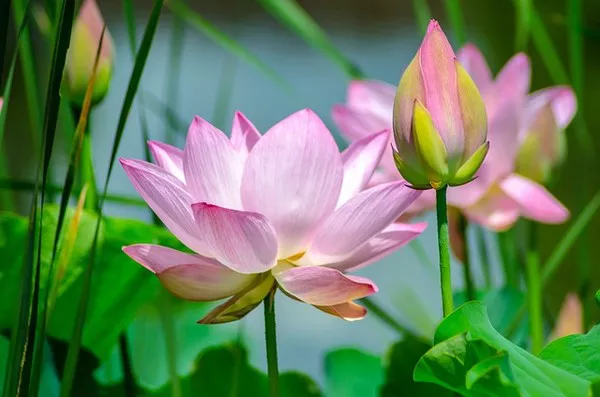The lotus flower, with its captivating beauty and rich symbolism, has fascinated cultures across the globe for centuries. From ancient Egypt to modern-day mindfulness practices, the lotus holds deep spiritual significance and serves as a powerful emblem of transformation, enlightenment, and resilience. In this comprehensive exploration, we delve into the multifaceted symbolism of the lotus flower, unraveling its timeless meanings and cultural interpretations.
Origins and Cultural Significance
The origins of the lotus symbolism can be traced back to ancient civilizations, where it held a prominent place in religious and philosophical contexts. In ancient Egypt, the lotus was revered as a symbol of rebirth and regeneration, closely associated with the sun god Ra and the cycle of life and death. Depicted in art and architecture, the lotus flower adorned temples and tombs, embodying the eternal cycle of creation and renewal.
Similarly, in Hinduism and Buddhism, the lotus occupies a central role, representing purity, enlightenment, and spiritual awakening. Known as the Padma in Sanskrit, the lotus is often depicted as emerging from murky waters, yet remaining unstained by its surroundings—a metaphor for transcending worldly attachments and achieving enlightenment. In Buddhist iconography, various deities and enlightened beings are depicted seated on or holding lotus flowers, symbolizing their attainment of higher consciousness and spiritual purity.
Symbolism of Growth and Resilience
One of the most striking aspects of the lotus symbolism is its association with growth and resilience. Despite growing in muddy, murky waters, the lotus rises above the surface each day, unfolding its petals in pristine beauty. This remarkable ability to thrive in adverse conditions has made the lotus a potent symbol of resilience and perseverance.
In many spiritual traditions, the journey of the lotus—from seed to radiant bloom—mirrors the human experience of overcoming obstacles and adversity to emerge stronger and wiser. Its ability to rise above the mire serves as a reminder of the inherent potential within each individual to transcend challenges and realize their true potential.
Spiritual Enlightenment and Self-Realization
At the heart of lotus symbolism lies the theme of spiritual enlightenment and self-realization. In Buddhist philosophy, the lotus represents the journey from ignorance to enlightenment, with each petal symbolizing a stage of spiritual awakening. As the lotus emerges from the depths of the muddy pond to bloom in the sunlight, so too does the practitioner transcend the illusions of the ego to attain a state of pure awareness and inner peace.
The lotus also serves as a powerful metaphor for the human soul’s journey towards self-realization in Hinduism. Just as the lotus rises above the murky waters to bask in the sunlight, the soul strives to overcome the limitations of the material world to unite with the divine.
Symbol of Beauty and Grace
In addition to its profound spiritual symbolism, the lotus is admired for its sheer beauty and grace. With its delicate petals and vibrant colors, the lotus has captivated artists, poets, and admirers throughout history. In various cultures, the lotus is celebrated as a symbol of purity, elegance, and transcendence.
In art and literature, the lotus often serves as a motif representing beauty, grace, and the ephemeral nature of existence. Its timeless allure continues to inspire creativity and evoke a sense of wonder and reverence.
Cultural Variations and Interpretations
While the lotus holds universal symbolism across different cultures, there are variations in its interpretation and significance. In Chinese culture, for example, the lotus is associated with purity, fertility, and abundance, and is often depicted alongside other auspicious symbols in art and literature.
Similarly, in Japanese culture, the lotus is revered as a symbol of purity, enlightenment, and perseverance. Known as “Hasu” or “Renkon,” the lotus features prominently in Japanese art, literature, and religious symbolism, where it is celebrated for its resilience and ability to thrive in adverse conditions.
Modern Interpretations and Applications
In today’s fast-paced world, the symbolism of the lotus continues to resonate with individuals seeking meaning, inspiration, and spiritual growth. From mindfulness practices to holistic healing modalities, the lotus serves as a powerful symbol of inner transformation and self-discovery.
In mindfulness and meditation, the lotus often serves as a focal point for cultivating inner peace, clarity, and presence. By visualizing the lotus flower unfolding within the mind’s eye, practitioners can tap into its transformative energy and connect with their inner wisdom and intuition.
Conclusion
In conclusion, the lotus flower stands as a timeless symbol of transformation, enlightenment, and resilience. Across cultures and civilizations, it has inspired awe and reverence, serving as a potent reminder of the human capacity for growth, transcendence, and spiritual awakening.
Whether depicted in ancient temples, modern art, or the depths of one’s consciousness, the lotus continues to unfold its petals of wisdom, inviting us to embrace our inherent potential and journey towards self-realization and inner peace. As we navigate the complexities of life, may we draw inspiration from the lotus flower, rising above the muddy waters of existence to bloom in the radiance of our true essence.


